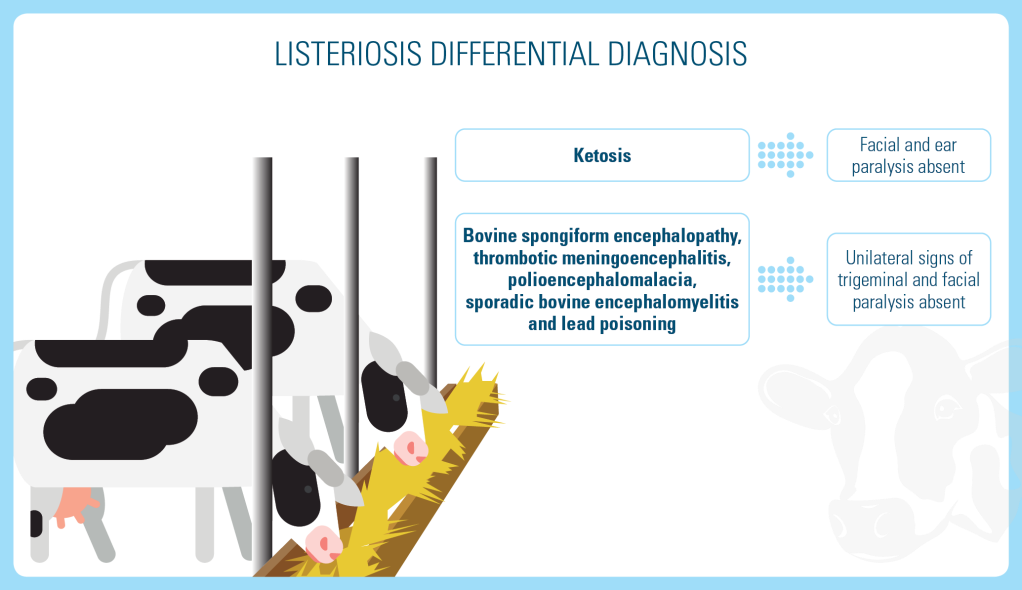

Listeriosis
Listeriosis is a sporadic bacterial infection that most commonly manifests as encephalitis or meningoencephalitis in adult ruminants. Listeriosis in cattle has worldwide distribution, but it is more frequent in colder climates1. Mortality is high among cattle without early antibiotic and supportive therapy.
Listeria monocytogenes bacteria enter the body via ingestion or inhalation and localize most often in the intestinal wall, medulla oblongata and placenta. This bacteria is a public health concern.
Examples of clinical presentation of Listeric encephalitis in cattle include:
- Depression, disorientation, and weakness
- Cows propel themselves into corners and lean against stationary objects
- Circles toward the affected side
- Facial paralysis with a drooping ear, deviated muzzle, flaccid lip, and lowered eyelid on the affected side
- Terminally affected animals fall and lie on the same side
Listeric abortion:
- Abortion (usually in the last trimester)
- Stillbirths and neonatal deaths
Abortions are usually sporadic but may affect 10%–20% of a herd. This can occur at any stage of gestation, and retained placenta is also common. The fetus is retained for two to three days after death, so autolysis may be extensive.
Listeriosis in cattle is confirmed only by isolation and identification of L. monocytogenes. Specimens of choice are brains from animals with CNS involvement, as well as aborted placentas and fetuses.

- Early and aggressive antibiotic treatment: penicillin, ceftiofur, erythromycin, and trimethoprim/sulphonamide
- Supportive therapy: fluids and electrolytes
- Feeding good quality corn silage with a low pH
- Avoid spoiled or moldy silage and silage from the top layer which has been exposed to air
- Rodents should be controlled
Although human listeriorisis is rare, all suspected material contaminated by L. monocytogenes must be handled with caution.
The bacteria can be isolated from:
- Aborted fetuses
- Milk from mastitic, aborting, and apparently healthy cows
The disease is of particular concern to immunocompromised persons and pregnant women. Veterinarians are at risk when treating bovine listeriosis2.
- Scott, PR. Overview of listeriosis. MSD Veterinary Manual. https://www.msdvetmanual.com/generalized-conditions/listeriosis/overview-of-listeriosis
- Woo-Sam NH. Listeriosis in a Holstein cow. Can Vet J. 1999;40(7):506-8.

